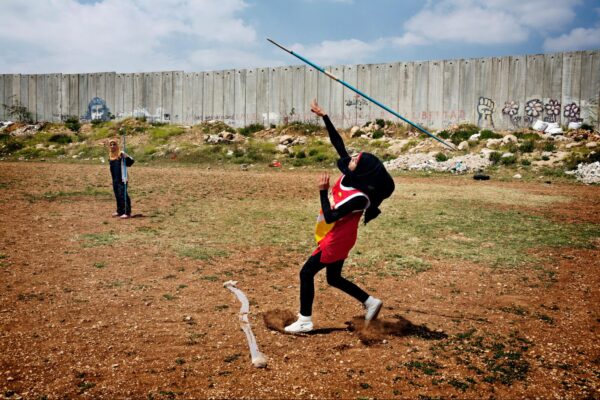In a New York Times article, “Palestinian Pleasures”, James Estrin looks at how one woman is trying to change the image of Palestinians. He writes:
Since the mid-1980s, the visual narrative of Palestinians in the West Bank and Gaza has been predictable: photographs of stone-throwing teenagers confronting Israeli soldiers, refugee camps, mothers mourning children killed in conflicts, and long lines at border crossing points. Particularly dramatic variations on these visual tropes make the front pages and win awards.
Tanya Habjouqa, a Jordanian-born photographer, looks for subtler strategies to explore today’s Palestinian experience.
She focused on pleasure instead of suffering. She focused on humor, too, which she said Palestinians use to face the absurdities of everyday life in the Israeli-controlled West Bank and the Hamas-controlled Gaza.

“I really felt like I needed to find another way to tell a story, not only just to make sense of it for myself but to make sense of it for how I’m going to present it to my children as well, since this is going to be their home too,” said Ms. Habjouqa, who lives in East Jerusalem with her husband, a Palestinian lawyer with Israeli citizenship, and their two children. Not everyone she wanted to photograph understood her approach right away. Some people were adamant about how they should be shown.
“Occasionally people would be offended when I told them what I was doing,” she said. “They would say, ‘We’re suffering and you want to talk about how good things are?’ I always had to explain the project. Especially in Gaza, where there would be this moment of distress and paranoia.”
But after describing the project and asking people how they navigated their situation to find fun or escape, most were willing to be photographed. ?And pleasures abounded, although they were sometimes bittersweet.
Read the entire article, and view more fascinating portraits of Palestinian life, here.

